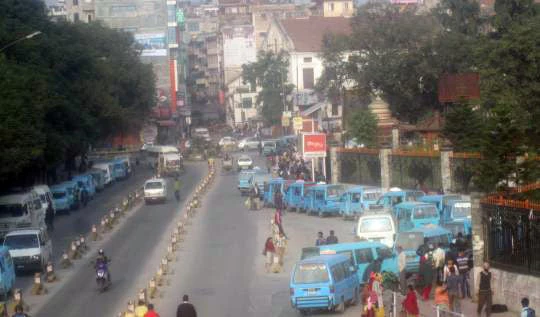A colleague of mine once told me that professionals who were responsible for designing public transport policies never used public transport themselves. This thought has been entrenched in my mind ever since. As a transport professional myself, I always try to use public transport whichever part of the world I visit, be it London, Delhi, Accra, Helsinki, or Colombo. It is one of the best ways to get a sense of how the public transport system operates in a particular city.
I joined the World Bank Nepal office some three years ago. I booked my temporary residence in a hotel through one of my friends. I had no idea how far the hotel was from my office so I took a taxi on my first day. Then I discovered that my hotel was close to a public transport route so I started using microbuses to commute to the office. On my way to work the microbus would never be full, so I could travel comfortably. But I hated my return journey as the microbuses would already be filled up at Shahid Gate and I would never get seats. Often I had to change buses and sometimes, if I stayed at work late, I had to take taxis as there were no buses after dark.
A lot of my Nepali colleagues also shared their experiences with me. A male colleague told me how he was mugged once. I also heard many unpleasant stories from my female colleagues on the experience of using public transport. I have to admit after this, I used public transport less frequently.
Transport is a means to an end, not an end in itself. We use transport to access facilities and services - jobs, educational institutions, health facilities, banks etc. Quality and availability of public transport make an impact on the welfare and income earning potential of people. Good quality and targeted public transport also helps in pulling people away from cars. Intensive public transport use not only contributes to people’s welfare but also helps enhance urban environment. For women in developing countries, public transport plays an even more important role, providing access to social, economic and life enriching activities and services. In the above context, cities in Nepal need safe, efficient, reliable and affordable public transport to achieve equitable and sustainable development.
The World Bank in Nepal is working with the government of Nepal to develop a National Transport Management Strategy. The strategy will address issues linked to broader transport management, as well as gender and public transport related issues. Findings from the recent gender and transport study is being incorporated into the National Strategy so that the various issues the women and men of Kathmandu face while using public transport will be effectively addressed in the coming days.
Read the recently released report: Gender and Public Transport in Nepal
Photo: Dee Jupp/World Bank



Join the Conversation